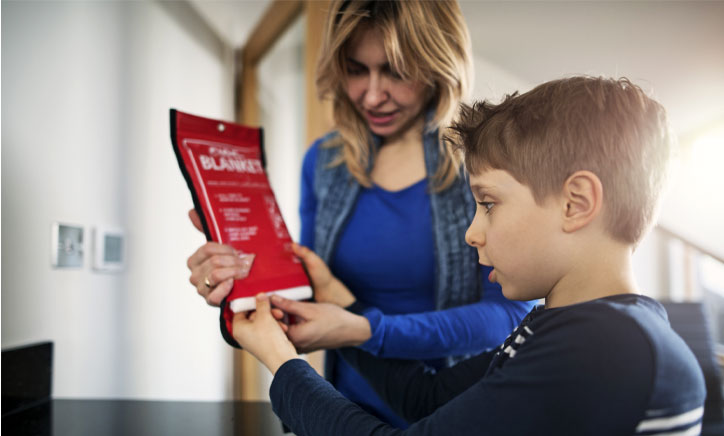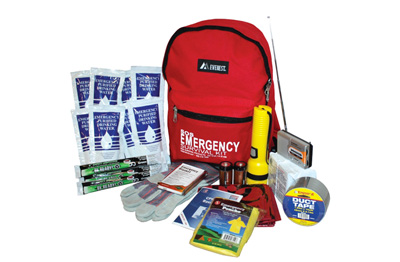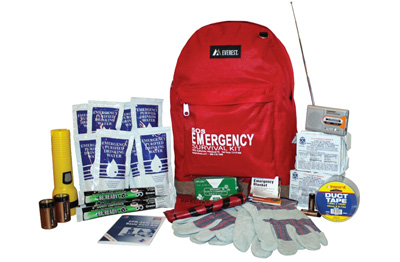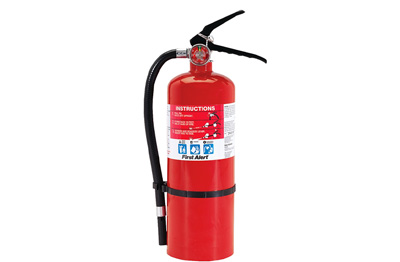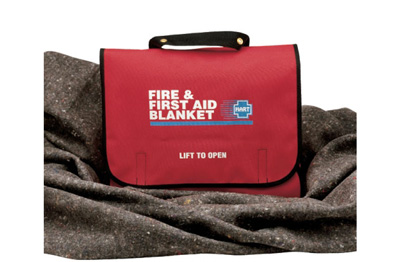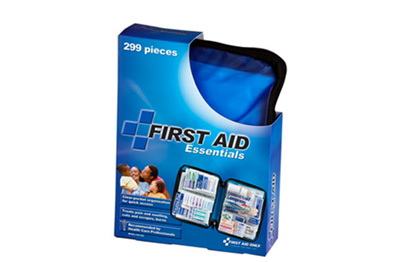
Everyday Safety & Disaster PreparationMonday, September 12, 2016 September is National Preparedness Month, a time to remember how important everyday safety and emergency preparation is year-round. This month is an active and even hectic one for many Americans. As kids are returning to school, the demand for motorist awareness increases, and with the cooler temperatures comes an influx in outdoor activities such as camping, hiking and biking - activities that have the potential to increase the risks of accidents. As the year goes on and the holidays approach, many of our readers will be seeing dramatic changes in weather, from increased rainfall to sleet and snow. This month, we'd like to remind you that there's never a better time to start practicing safety and readiness than now. From committing to better driver awareness and knowing your limits as a wilderness enthusiast to preparing for a large-scale disaster such as a flood or an earthquake, preparation starts with you. Individual PreparationIt's easy to become accustomed to the idea that emergency responders will be there when you need them. But what happens when they can't be? If you're not able to place a call for help or if all emergency response teams in your area are unavailable, such as in the event of a large-scale disaster, it's vital that you have an action plan. Planning ahead is your most valuable tool in the event of an emergency. Here's how: Be AwareBeing aware of potential disasters increases your chance of survival. Know your surroundings, your limitations and check weather conditions before traveling, camping or hiking. Always take weather warnings seriously. You can stay up to date on changing weather conditions through your local news programs or by downloading a weather app for your phone. In the event of a major disaster, the Mobile Fema app will allow you to receive continual weather alerts, safety reminders and locate shelters in your area. Prepare a KitHaving an emergency kit ready at all times will allow you to think and act quickly in the event of an emergency. Before you pack your kit, make a list to help weed out the essentials from the non-essentials. Your list should most certainly include water, a battery-powered or hand-crank radio that will allow you to receive emergency alerts in the event that other forms of communication are down, at least one flashlight, and extra batteries if your flashlight uses them. If you depend on life-saving medications such as insulin or necessary aids such as eye glasses, ensure that these are placed into your kit as well. If you have pets, your kit should include any vital items necessary for you to keep your pet safe during a disaster. Prepare an Exit RouteIn the event that you have to evacuate your home during a major emergency, it's important to have a plan in advance. Decide where you'll go and which route you will take, and practice your escape route at least twice a year. Additionally, take note of alternate routes available to you, and stay aware of any road closures that might impact driving. Ensure that your escape plan is realistic by practicing it, and that you've taken the need to pet accommodation into account. Family PreparationTalk to Your Kids
Children thrive on routine, and the more you can prepare them for the possibility of an emergency, the more in control they'll be able to feel in the event. Depending on your child's age, allow him or her to participate in preparing an emergency kit and your emergency action plan.
Talk to your child about why safety and emergency preparedness are important openly and often, and enroll older children in a CPR and First Aid course.
Practice Your PlanPracticing how you'll act in the event of an emergency or disaster will help your family work out the kinks in your plan. Depending on your needs, you might stage drills for earthquakes, water-related emergencies or fire, giving your family the opportunity to get used to the idea of following up on the plan you've been talking about. Involve your family in practice drills several times a year to ensure your plan won't fall apart when you'll need it the most. Know What to Do Should You Get SeparatedIt's difficult to even consider, but planning on becoming separated should be a part of every emergency plan. Whether you're at the mall, the hiking trail or you've been struck by a disaster like an earthquake, being separated without a plan can be absolutely detrimental. Choose a meeting place. It's our natural instinct to begin a search for a loved one as soon as you realize they're missing, but walking around aimlessly searching for one another only increases your risk of not finding one another. In the event that you're separated from your family, whether that's at the supermarket or during a major-scale emergency, it's important you designate a meeting place ahead of time. Reaffirm your meeting place regularly, and emphasize the importance of a meeting place with your family. Notify family that you are safe after an emergencyA site like this will allow you to communicate with the loved ones not within your reach during an emergency. It's not unlikely that you won't be able to place a call during an emergency as call traffic generally increases dramatically during a time like this. But emergency sites like the one linked above are capable of handling an influx in users, allowing you to let worried friends and family members know you're not in danger. Community PreparationYour community is full of resources and can be a valuable asset in the event of an emergency that affects your whole neighborhood. If you're not sure where to start, www.americorps.gov is an excellent resource to help you to get to know your neighbors, plan together, identify local resources assign responsibilities and set goals. Being prepared starts with you. By taking everyday responsibilities seriously, planning accordingly and connecting with your neighbors, you will be able to set the cornerstones for successful safety and emergency preparedness today. |


